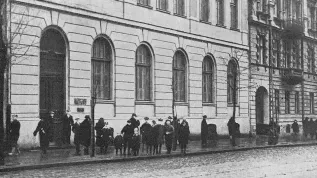
Traces of cheese making from over 7 thousand years ago were discovered on vessels found in Kujawy. Publication on this subject by British, American and Polish scientists has been published in Nature.
Ancient people of Northern European had been making cheese more than 7 thousand years ago, according to the researchers from the University of Bristol (United Kingdom), Princeton University (U.S.), University of Gdańsk, Institute of Archaeology and Ethnology of the Polish Academy of Sciences, the Museum of Archeology and Ethnography in Łódź and the Archaeological Museum in Poznań.
This conclusion follows from the analysis of fragments of ceramic vessels found in settlements of the first farmers in this part of Europe. "Farmers represented the ribbon engraved ceramic culture community and originated from the areas located south of the Carpathians. Interestingly, the villages of ancient farmers discovered in the areas have the most fertile soil. One of these regions, in fact the most important in the Polish Lowlands, is Kujawy. Farmers first settled here around 5400 years BC" - told PAP one of the authors of the publication, Prof. Marzena Szmyt of Adam Mickiewicz University and the Archaeological Museum in Poznań.
Their vessels used in the study, found in Brześć Kujawski, Miechowice, Smólsk, Wolica Nowa, Stare Nakonowo and Ludwinowo, are about 7 thousand years old. They are called strainer vessels due to characteristic holes. In fact, they are strikingly similar to modern colanders. Archaeologists have long suspected that the vessels could be used for straining cut milk. They only lacked hard evidence to support this.
The proof has been found in chemical analysis out by the Organic Geochemistry Unit at the University of Bristol. "The analysis involved the search for traces of processed foods such as fats on vessel walls" - explained Prof. Szmyt.
In Kujawy vessels, researchers have indeed found traces of milk processing. "Since these vessels have holes over the entire surface, they could not have been used to store or cook milk, but rather to process milk into cheese or curd with the same method as one used in today’s homes. Today’s food enthusiasts make their own cottage cheese from fresh milk, straining it (after acidification and light warming (through a sieve). This method has not changed since the sixth millennium BC!" - the archaeologist emphasised.
She noted that the greatest achievement of researchers was clear confirmation that the methods of processing milk into cheese had already been used by the earliest farming communities in central Europe. "This confirms the high level of their skills. Currently, the oldest such evidence has been found in Kujawy, which we are particularly happy about. But this is only the first step. In the future, we will probably discover that first farmers in other parts of Europe had similar skills" - emphasised prof. Szmyt.
The publication authors also pointed out that the ability to process milk, especially into cheese, was extremely important in these prehistoric societies, as it allowed to store milk for a long time, and made easier to transport it. It was also beneficial for people because human body digests and absorbs processed milk proteins much easier than unprocessed milk.
"It is worth noting that traces of dairy products have been discovered on vessels found in north-western Turkey and Libya. They are dated to 8000 and 7000 years ago. These vessels, however, were not sieves, so we do not know what dairy products had been stored or cooked"- added Prof. Szmyt.
PAP - Science and Scholarship in Poland, Anna Ślązak
zan/ szz/ ula/
tr. RL
Fundacja PAP zezwala na bezpłatny przedruk artykułów z Serwisu Nauka w Polsce pod warunkiem mailowego poinformowania nas raz w miesiącu o fakcie korzystania z serwisu oraz podania źródła artykułu. W portalach i serwisach internetowych prosimy o zamieszczenie podlinkowanego adresu: Źródło: naukawpolsce.pl, a w czasopismach adnotacji: Źródło: Serwis Nauka w Polsce - naukawpolsce.pl. Powyższe zezwolenie nie dotyczy: informacji z kategorii "Świat" oraz wszelkich fotografii i materiałów wideo.













